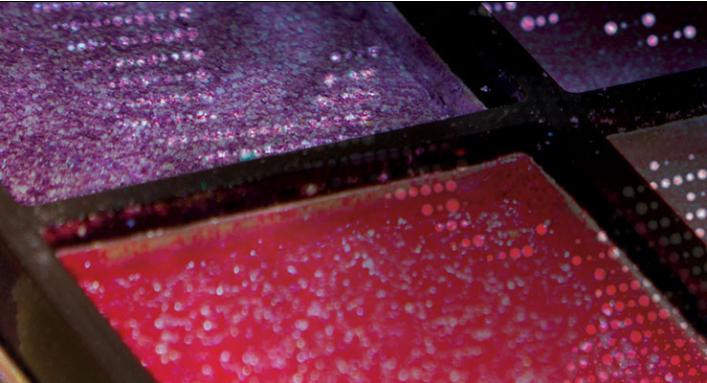
2022-04-18 17:52:44
Top 20 Global Beauty Companies
2022-04-18 17:52:44
 In the past year, the Beauty industry showed its flexibility, ingenuity and technical prowess, as brands and suppliers exercised remarkable fluidity in adapting to extreme conditions unlike any the world has seen.
In the past year, the Beauty industry showed its flexibility, ingenuity and technical prowess, as brands and suppliers exercised remarkable fluidity in adapting to extreme conditions unlike any the world has seen.In addition to the catastrophic human suffering caused by the Covid-19 pandemic, global business was strongly impacted not only by sudden brick-and-mortar retail closures, but also by the shutdown of international travel—two of Beauty’s most lucrative sectors. Work-from-home makeup-free habits and mask wearing contributed to a downward spiral in color cosmetic sales.
But all was not lost. Some beauty brands and suppliers quickly pivoted to produce pandemic essentials such as hand sanitizer, while others shifted their digital capabilities into high gear via IT infrastructure, distribution channels, enhanced e- and m-commerce sites, select third-party online malls, and support of authorized retailers around the world to strengthen e-commerce businesses and virtual connections with consumers switching over to a digital shopping mode.
It was a shift that’s bound to be permanent.
In their annual report, The Estée Lauder Companies stated:
“The Covid-19 pandemic has had a significant impact on consumer behaviors and has accelerated the trend for a digital-first consumer journey and e-commerce. This provided a catalyst for redesigning each brand’s high-touch experience and accelerated the implementation of new direct-to-consumer business models and consumer engagement programs, such as selling through social media and web conferencing platforms."
“We have opportunities to expand our brand portfolio online around the world, and we are investing in and testing new omnichannel concepts in the United States, China and other markets to increase brand loyalty by better serving consumers as they shop across channels and travel corridors. We have dedicated resources to implement creative, coordinated, brand-enhancing strategies across all online activities to increase our direct access to consumers.”
While understandably some of our Top 20 beauty companies faltered amid the major disruption, others flourished—including The Estée Lauder Companies, P&G, and L Brands (due mostly to Bath & Body Works where trending home scents during lockdown contributed to a corporate gain of a billion dollars in 2020).
Prestige cosmetic sales, especially hero products, largely driven by China, led the financial positivity for many companies on this year’s list.
For fiscal 2020, over 40% of ELC’s mainland China net sales was contributed via the company’s online channels, attributing growth to a boom in luxury cosmetic sales, which grew almost 100% in China and 40% in Korea. Things continue to look up; Amorepacific, for instance, posted outstanding gains in Q2 2021, with net profits jumping 2,680%, and sales growing 10.4%.
Sustainability, Refillables & Inclusivity
Consumers are getting more vocal in their preference to purchase from companies that hold compelling sustainability goals. Inclusivity of all races and genders, and women-led organizations are also drivers to purchase.Circular economy goals picked up greater speed this year, especially as 2025 approaches—the year many companies, and some governments, have targeted for a major reduction in single-use plastic packaging. As a result, the 2020-2021 period has been a time for advancements in sustainable solutions, new materials and refillables.
Beauty's New CEOs
In the midst of the pandemic, more than a quarter of our Top 20 announced the transfer of the CEO torch.New CEOs were announced at L’Oréal (Nicolas Hieronimus replaces Jean-Paul Agon); at Beiersdorf (Vincent Warnery replaces Stefan De Loecker); at Shiseido Americas, Ron Gee took over the role; P&G named John R. Moeller as president and CEO; and in late August, Johnson & Johnson announced that Joaquin Duato would take over for Alex Gorsky in January 2022. At Kao, Yoshihiro Hasebe became representative director, president and CEO.
In other CEO news, Forbes announced in March that Bernard Arnault, chief executive of LVMH, topped the Forbes Billionaires List, becoming the wealthiest person in the world—alternating day by day with Amazon’s Jeff Bezos.
More Trends to Watch
In addition to a continuing ramp-up of refillables, watch for more non-surgical cosmetic solutions; a scaling down of SKUs; an uptick in AI-based apps to analyze users’ facial features; increased partnerships between suppliers; more regional manufacturing to ensure supply chains; double-duty products; and a heightened focus on India.An upbeat global forecast finds fragrance on a growth path in China, Saudi Arabia and elsewhere—and new perfume launches are abundant.
At press time, the Estée Lauder Luxury Fragrance Collection premiered with eight distinct olfactory trends designed to appeal to an array of distinct global customers.
Report Data
Just a note on the compilation of this report: Companies were analyzed based on 2020 data. But annual reporting varied among these leaders from 12-31-20 to 6-30-21.Beauty sales included only cosmetics, fragrance and personal care items when possible. Figures for companies outside the U.S. were based on the exchange rate for the fiscal year on the day it ended. Estimates are provided in cases where full disclosure was not available.
And as always—we’ve included a focus on Top 20 packaging innovations wherever possible.
Take a look at our list — and click through to the feature on each company.
Top 20 Beauty Companies — Ranked By Beauty Sales
1. L’Oréal $34 billion2. Unilever $26 billion
3. The Estée Lauder Companies $16 billion
4. Procter & Gamble $13.4 billion
5. Shiseido $8.9 billion
6. Natura &Co $7.1 billion
7. Beiersdorf $7 billion
8. L Brands $6.4 billion
9. LVMH $6.4 billion
10. Johnson & Johnson $6 billion
11. Kao $5.2 billion
12. LG Household & Health Care $5.1 billion
13. Coty $4.7 billion
14. Henkel $4.5 billion
15. Colgate Palmolive $3.5 billion
16. Chanel $3.4 billion (est.)
17. Kosé $2.7 billion
18. Mary Kay $2.7 billion
19. Amorepacific $2 billion
20. Revlon $1.9 billion
LinkedIn




